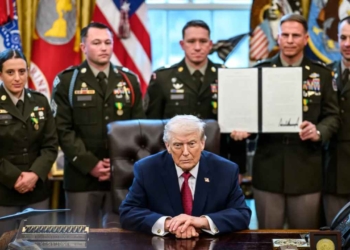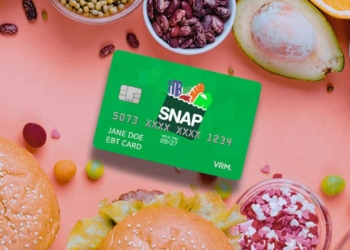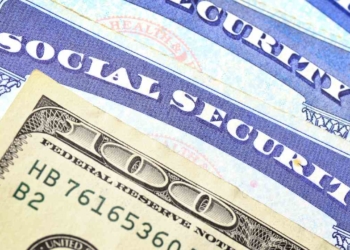Americans are holding onto an estimated $60-$90 in coins per household. While some rare pennies can be quite valuable, the truth is that most are only worth a few cents. People have several options to exchange their coins for cash, including banks, credit unions, or using Coinstar kiosks.
Americans are sitting on a treasure trove of unused coins, with an average of $60-$90 per household. Although some rare pennies are fetching impressive sums, the majority of pennies in circulation aren’t as valuable as some misleading online headlines suggest. To accurately determine the value of your coins, consider using trusted resources like “The Red Book” or having your coins professionally graded.
Learn to love your coins. That’s the message from Kevin McColly, CEO of Coinstar, the company behind those familiar coin-cashing machines you often see in supermarkets. In a world where cash is becoming less common, embracing the value of your coin collection can be surprisingly rewarding.
According to the Federal Reserve, American consumers made only 16% of their payments in cash in 2023. Moreover, a 2022 Pew survey highlighted that two-fifths of consumers never use cash at all. This shift away from cash transactions leaves many coins unused, waiting to be converted into something more practical. With the decline of cash usage, it’s time to rethink the potential locked within those jars of coins at home.
President Donald Trump has made a bold decision by directing the Treasury to cease the production of pennies, citing that the cost of minting these coins surpasses their actual value. Interestingly, this issue also applies to nickels.
Reconsidering the Value of Coins
For many Americans, both nickels and pennies are seen more as an inconvenience than as useful currency. According to the Federal Reserve, the average household accumulates between $60 and $90 in forgotten coins, enough to fill one or two pint-sized beer mugs. Every year, Americans discard millions of dollars’ worth of coins, literally treating them as trash.
Why do we continue to neglect coins? It’s time to rethink our attitude towards them. As McColly suggests, we should change the way we perceive coins.
Let’s not forget the obvious: coins have monetary value. Coinstar manages to transform $3 billion in coins into spendable cash annually, one jar at a time. On average, a coin jar can provide $58 worth of buying power.
Most of us don’t fully realize just how much our spare change is worth. Therefore, making a trip to exchange these coins could result in a delightful surprise.
“People often underestimate the true value of the coins in their jar, usually by about half,” McColly remarked. “It’s an incredibly pleasurable experience to discover this hidden wealth. It’s like stumbling upon found money.”
Who Still Relies on Cash?
According to the Federal Reserve, certain groups of Americans, such as lower-income households and individuals over the age of 55, continue to use a significant amount of cash. Additionally, people who prefer shopping in person tend to rely more on cash transactions.
For the rest of us, McColly suggests it’s time for a paradigm shift in how we view coins. Rather than seeing them as clutter, consider them as valuable recyclables.
The Lifespan and Value of Coins
Despite a decrease in production, the Treasury still mints over 5 billion coins each year, as reported by CoinNews. These coins are crafted from natural resources: copper-plated zinc for pennies and copper-nickel alloys for nickels, dimes, and quarters.
- Pennies: Made from copper-plated zinc
- Nickels, Dimes, Quarters: Composed of copper-nickel alloys
Americans can play a significant role in the economy by focusing on gathering and “recycling” their idle coins. If more people took this seriously, the U.S. Mint wouldn’t need to produce as many new coins.
The Business Behind Coin Collection
Admittedly, McColly has a personal stake in the matter. His company earns a small percentage from the coins that consumers deposit. However, this doesn’t diminish the value of his point.
Convenient Ways to Exchange Your Coins
According to Kimberly Palmer, a personal finance expert at NerdWallet, you can avoid fees by taking your coins directly to your own bank or credit union. Both NerdWallet and Bankrate provide helpful guides for exchanging coins for cash.
A Shift in Payment Methods
Ted Rossman, a senior industry analyst at Bankrate, highlights a critical point: “We’ve been much slower than parts of Europe and Asia to embrace mobile payments and contactless credit cards.” This observation underscores the evolving landscape of financial transactions.
The Pandemic’s Impact on Cash Usage
The pandemic served as a stark reminder of our reliance on cash, as consumers and business owners hoarded their coins during the global shutdown, leading to a real coin shortage. “It kind of froze the whole system,” Rossman noted, illustrating the fragility of traditional currency systems.
Retiring Coins: An Ongoing Debate
The question of retiring coins, particularly the penny, remains a contentious issue. While former President Trump has directed the Mint to cease penny production, some advocates are calling for a complete halt in their usage.
- The Common Cents Act, introduced on April 30 by a bipartisan group of lawmakers, proposes rounding cash transactions to the nearest five cents.
- Sen. Kirsten Gillibrand, a New York Democrat, argues, “The penny is outdated and inefficient and no longer serves the needs of our economy.”
These discussions highlight the ongoing evolution of currency and the shift towards more modern, efficient systems that better serve today’s economic landscape.
The Penny Dilemma
“So, You Want to Get Rid of the Penny,” questioned the New York Times. “Do You Have a Plan for the Nickel?” This intriguing headline sparks a deeper discussion about what happens if we eliminate the penny.
Removing the penny could potentially bring about unexpected challenges. According to the Times, if America were to dispose of its pennies, we’d soon be overwhelmed with an abundance of nickels.
From a financial perspective, the government incurs a loss of nearly three cents for every penny minted. When it comes to a nickel, the loss is almost nine cents. An increase in the number of nickels would thus translate to greater financial losses.
Eliminating Money-Losing Coins
One might suggest that America could eliminate both the penny and the nickel—two coins that are financially burdensome. However, this raises practical concerns.
- Without pennies or nickels, how would consumers handle transactions that total 15 cents?
- Would prices need to be rounded to the nearest 10 cents, extending the Common Cents Act further?
- What implications would this have for other coins, like the quarter?
These are critical questions that need answers as we ponder the future of our coinage system.
The Most Valuable Coins
The most valuable U.S. coin ever sold is the $20 gold piece known as the 1933 “Double Eagle”, which fetched an astonishing $18.9 million at auction in 2021. Despite the rarity of such high-value coins, some valuable pennies are still potentially in circulation.
- 1943 Copper Lincoln Wheat Pennies: These pennies are particularly noteworthy. Produced accidentally during World War II, when U.S. mints were supposed to use zinc to conserve copper for the war effort, these rare coins could be hiding in plain sight.
John Feigenbaum, publisher of the rare coin price guide Greysheet, highlights these rare 1943 copper pennies as a key example of coins that carry significant value due to their scarcity and historical significance.
Imagine owning a penny that could sell for over $1 million. In rare instances, some 1943 pennies have fetched this staggering amount, with one remarkable coin going for more than $200,000 at an auction in 2019.
The Value of 1943 Lincoln Wheat Pennies
According to Feigenbaum, a renowned expert, the value of a 1943 Lincoln wheat penny can range from $100,000 to $250,000, depending on its condition. However, he compares the odds of owning such a rare penny to winning the lottery, saying it’s like claiming your ticket might be worth $100,000. It’s possible, but highly unlikely.
The term “wheat pennies” originates from the coin’s design, featuring stalks of wheat encircling the “One Cent” text on the reverse side. These pennies were minted from 1909 to 1958. After this period, the design was updated to feature the Lincoln Memorial.
- Most Lincoln wheat pennies have modest value, typically worth just a few cents more than their face value.
- Some pennies can reach into the hundreds of dollars, primarily based on their condition and minting year.
- Certain rare vintages, especially those with minting errors, can be worth thousands.
If you’re curious about the potential worth of your wheat pennies, the NGC price guide can offer more insights into their value.
You’ve probably encountered sensational headlines about those supposedly super-valuable Lincoln wheat pennies that spark curiosity and excitement. According to coin expert Feigenbaum, these headlines are often generated by artificial intelligence, designed to attract visitors to websites.
The Reality Behind the Headlines
Feigenbaum notes that it’s highly improbable for these coins to appear in everyday change. Despite the buzz created online, coin shops are flooded with individuals convinced they possess a rare find, though, in reality, they do not.
Impact on the Coin Market
The surge in interest has led to several outcomes:
- Overvalued coins being sold on platforms like eBay and Etsy.
- The circulation of counterfeit Lincoln wheat pennies, often originating from China.
Feigenbaum remarks that if he’s seen these coins, it means someone, every now and then, is being misled.
What To Do If You Suspect You Have Valuable Coins
If you find yourself with pennies or other coins you believe might be valuable, consider this: while the most valuable coins are usually part of collections and have been publicly sold and resold, there are instances where individuals might inherit a collection of well-preserved coins or stumble upon them at an estate sale.
In such cases, it’s advisable to consult with a reputable coin expert or appraiser to determine the true value of your coins, ensuring you’re not part of the growing number of people being misled by inflated claims.
Dive into the fascinating world of coin collecting by exploring the true value of your coins. While apps are available to assist in evaluating your collection, they may not always provide the most accurate information. For a more reliable source, consider consulting “The 2026 Red Book: A Guide Book of United States Coins”. This comprehensive guide, which can be found in bookstores and online at major retailers like Amazon and Barnes & Noble, answers a variety of questions for both novice and seasoned collectors. As Feigenbaum, one of the book’s editors, notes, “If you’re thinking about collecting Lincoln cents, you’ll find out exactly what you can expect to pay.” You’ll discover that, contrary to some beliefs, there are no million-dollar Lincoln cents in circulation.
Get Your Coins Graded
To truly understand the worth of your coins, consider having them professionally graded and authenticated, much like fine jewelry. Several reputable services offer this, including:
- CAC (Certified Acceptance Corporation)
- Numismatic Guaranty Company (NGC)
- Professional Coin Grading Service (PCGS)
These organizations provide a reliable assessment of your coins, ensuring you know their true market value.







